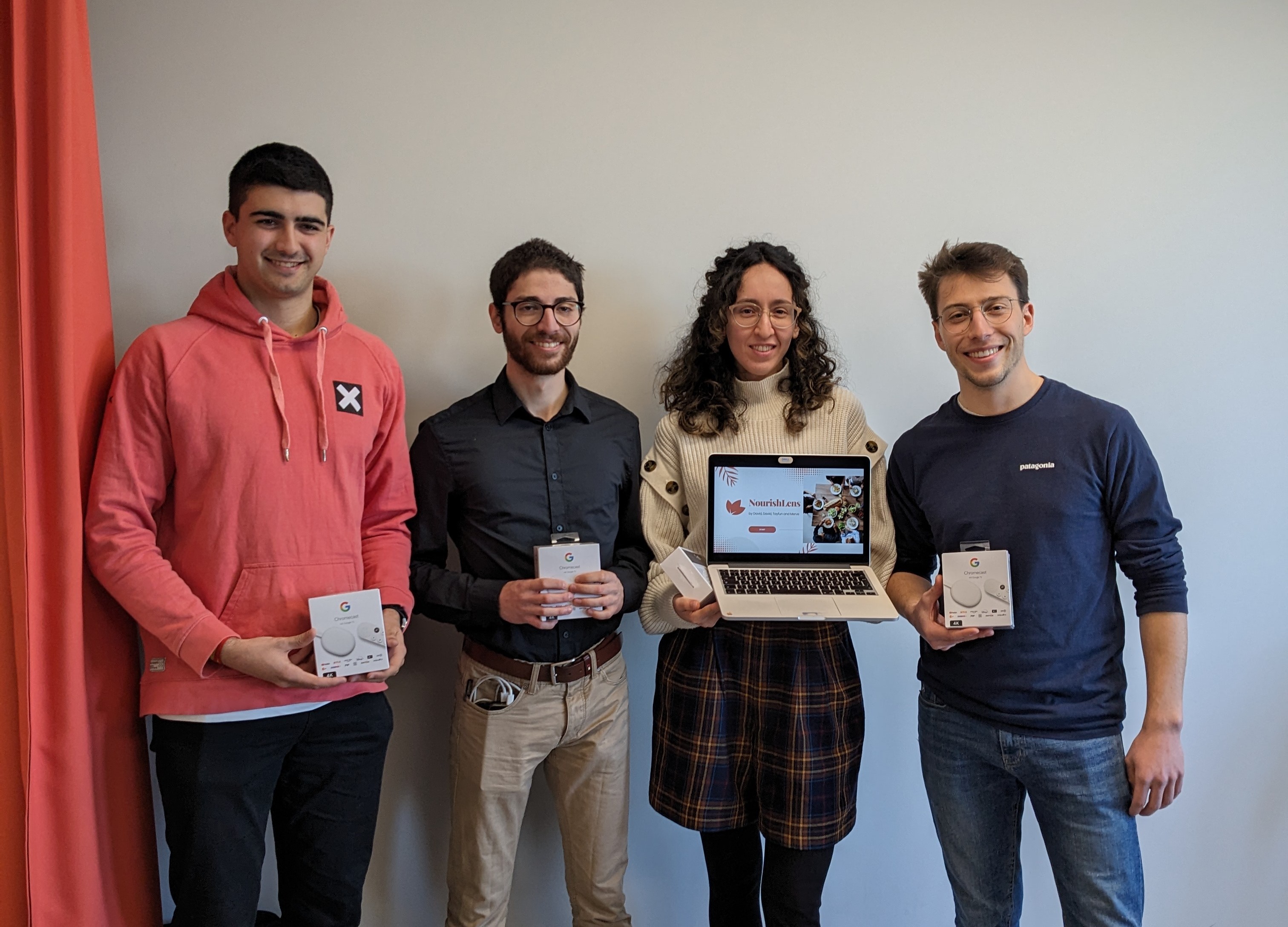This project was developed for the weekend Ideathon as part of the GDSC Solution Challenge.
When addressing the health challenges with nutrition faced by low-income families, we often make a common mistake; to associate malnutrition uniquely with hunger. Reality shows that malnutrition isn’t only about the lack of food but also about poor dietary choices that contribute to an unhealthy lifestyle. According to the World Health Organization, at least 2.8 million people die as a result of being overweight or obese. In addition, in the US, “children from low-income and low-education households had 3.4-4.3 times higher odds of obesity than children from higher socioeconomic households.” [1] This pressing issue calls for innovative solutions to close the health gap and tackle the root causes of this inequality. We want to help these families to improve their well-being by helping them to slowly change their buying habits.
As the solution to this big issue, we present NourishLens; a revolutionary app crafted to empower families with lower incomes, progressively guiding them towards adopting healthier lifestyle habits and effectively narrowing the obesity gap. The nutrition and health sector are crowded with apps that offer different functionalities. The main issue is the constant effort they require to manually add every single meal. What sets NourishLens apart are two main points. First, its unique feature – users don’t need to tediously input daily meals. A simple photo of the grocery receipt enables the app to estimate the nutrients and nutritional value of their dietary intake. Second, we focus on low-income households to reduce the inequality and health gap, using cost-effective recommendations to improve nutrition.
NourishLens envisions a future where health disparities are minimized, and all families, regardless of income, have access to the tools needed for healthier living. By placing a focus on grocery purchases, our app ensures that cost-effective and nutritious alternatives are not just accessible but also tailored to families with limited financial resources.
In our approach, we try to attack targets 2.2:”Ensure healthy lives and promote well-being for all at all ages” and target 3.4: “End hunger, achieve food security and improved nutrition and promote sustainable agriculture”. The indicators to measure the impact of the solution will be: “Prevalence of malnutrition (weight for height >+2 or <-2 standard deviation from the median of the WHO Child Growth Standards) among children under 5 years of age, by type (wasting and overweight)” and “Mortality rate attributed to cardiovascular disease, cancer, diabetes or chronic respiratory disease“
- Singh GK, Siahpush M, Kogan MD. Rising social inequalities in US childhood obesity, 2003–2007. Ann Epidemiol 2010;
